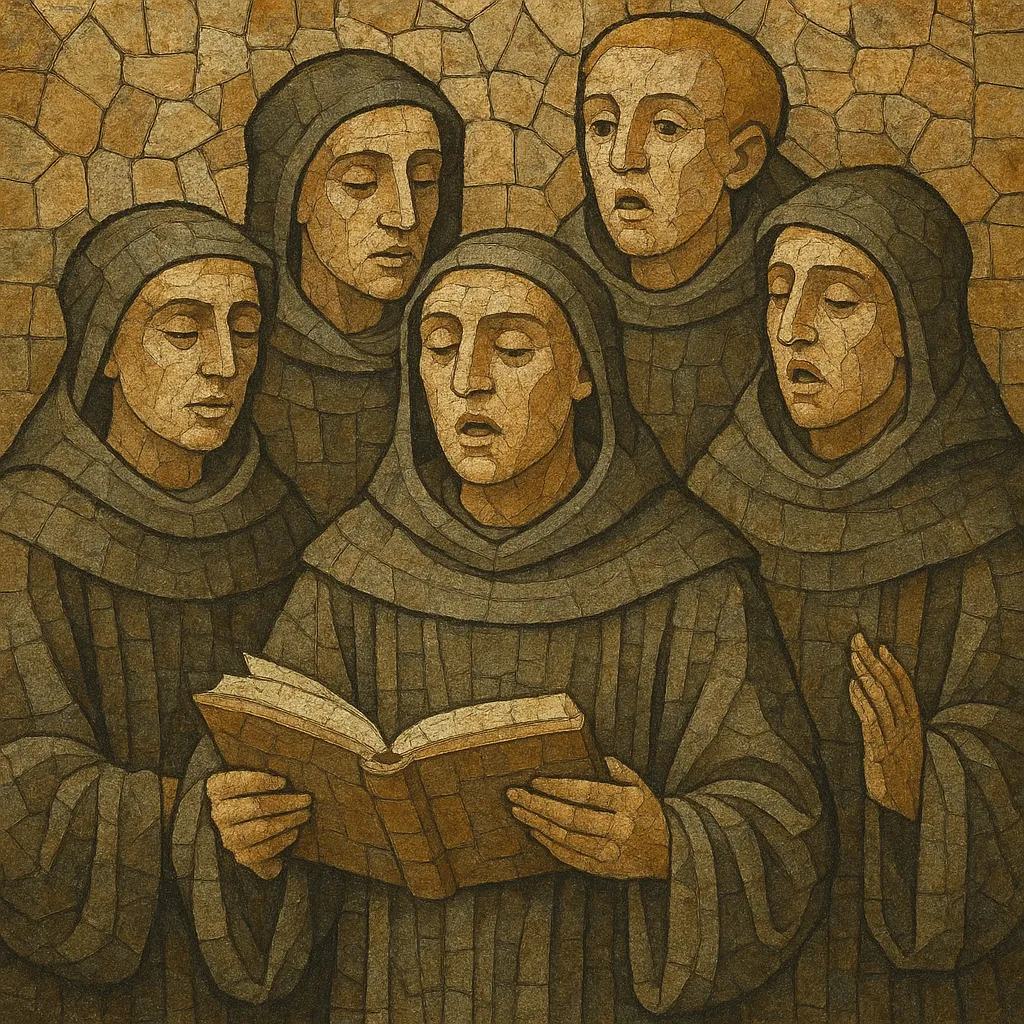Gregorian chant is the central tradition of Western plainchant, a monophonic, unaccompanied sacred song of the Roman Catholic liturgy. Sung in Latin (and occasionally Greek), it employs modal melodies that flow with the natural accent of the liturgical text rather than a fixed meter.
Characterized by stepwise motion within a narrow range and by free rhythm guided by the syllabic and melismatic shapes of the text, Gregorian chant aims to create a contemplative, prayerful atmosphere. Its melodies are organized by the medieval church modes and are transmitted in neumatic notation—first adiastematic (height-indeterminate) neumes and later square notation on a four-line staff.
Although named after Pope Gregory I, the repertory crystallized during the Carolingian era as a synthesis of Roman and Gallican practices, and it became the foundation for much of Western sacred music and the development of early polyphony.
Gregorian chant emerged in the Carolingian Empire during the late 8th and early 9th centuries as rulers promoted liturgical unity. Frankish cantors fused Roman chant imported from Rome with local Gallican practices, producing a standardized repertory later retrospectively attributed to Pope Gregory I. This project aligned religious devotion with imperial consolidation and facilitated the widespread adoption of a common liturgical song.
Early transmission relied on oral tradition supported by adiastematic neumes that indicated melodic contour and vocal gesture rather than exact pitch. By the 11th century, staff notation—famously advanced by Guido of Arezzo—enabled precise pitch placement via square notation on a four-line staff. The repertory was organized into categories such as antiphons, responsories, introits, graduals, alleluias, and ordinaries of the Mass.
Gregorian chant became the cantus firmus over which early polyphony (organum) was constructed, leading into the Ars antiqua and Ars nova periods. Chant provided modal, melodic, and formal frameworks for motets, masses, and other liturgical forms, even as rhythmic and contrapuntal complexity increased.
While Renaissance polyphony sometimes obscured chant in performance, the Counter-Reformation sustained its liturgical use. A major revival began in the 19th century at Solesmes Abbey under Dom Joseph Pothier and Dom André Mocquereau, who produced critical editions and restored rhythmic nuance based on early manuscripts. Their work shaped the Vatican Edition (Editio Vaticana) and standardized performance practice into the 20th century.
In the late 20th and early 21st centuries, recordings by monastic choirs (e.g., Santo Domingo de Silos, Heiligenkreuz) brought chant to broad audiences. Scholars and ensembles continue to explore regional variants, early notations, and performance practice, while the repertory remains central to Catholic liturgy and a touchstone for contemplative and modal composition.
-
•
Select the liturgical text and determine its function and mode.
•Outline an incipit, recitation, and cadential plan consistent with the mode and genre (antiphon, responsory, etc.).
•Draft the melody syllable-by-syllable, shaping neumes to the text’s accent and meaning.
•Refine phrasing, breath points, and melismas; rehearse for unified vowel color, blend, and intonation.


